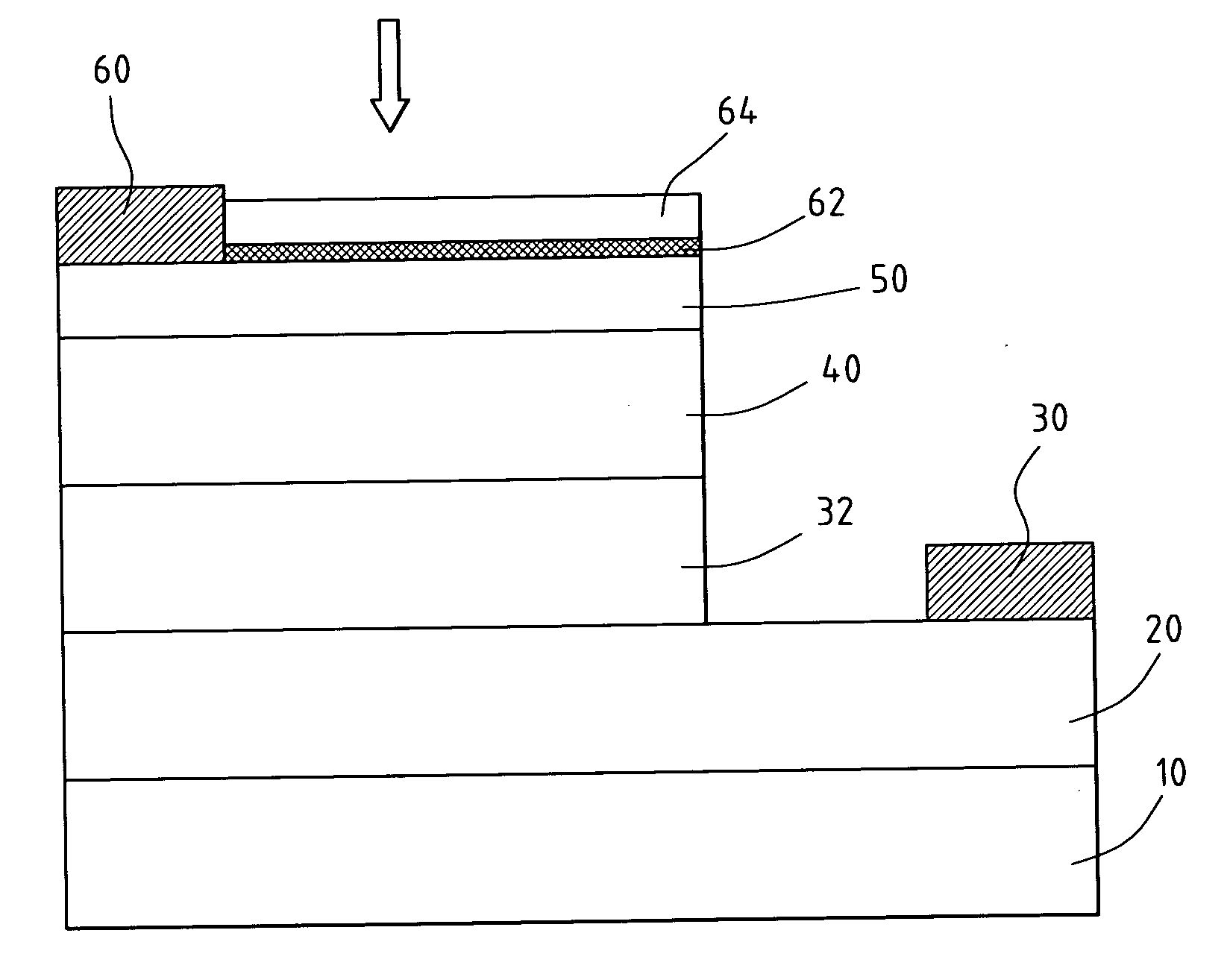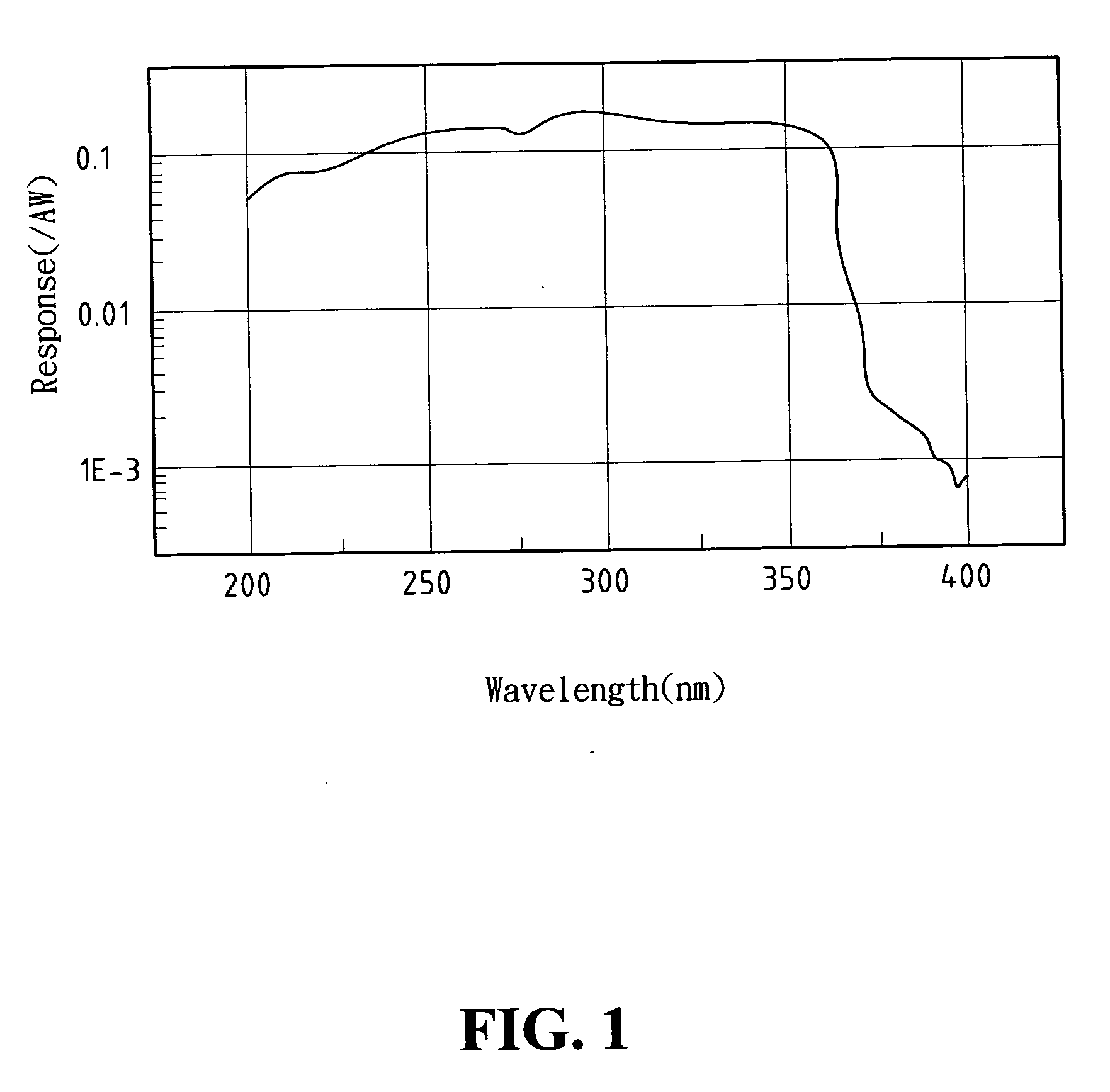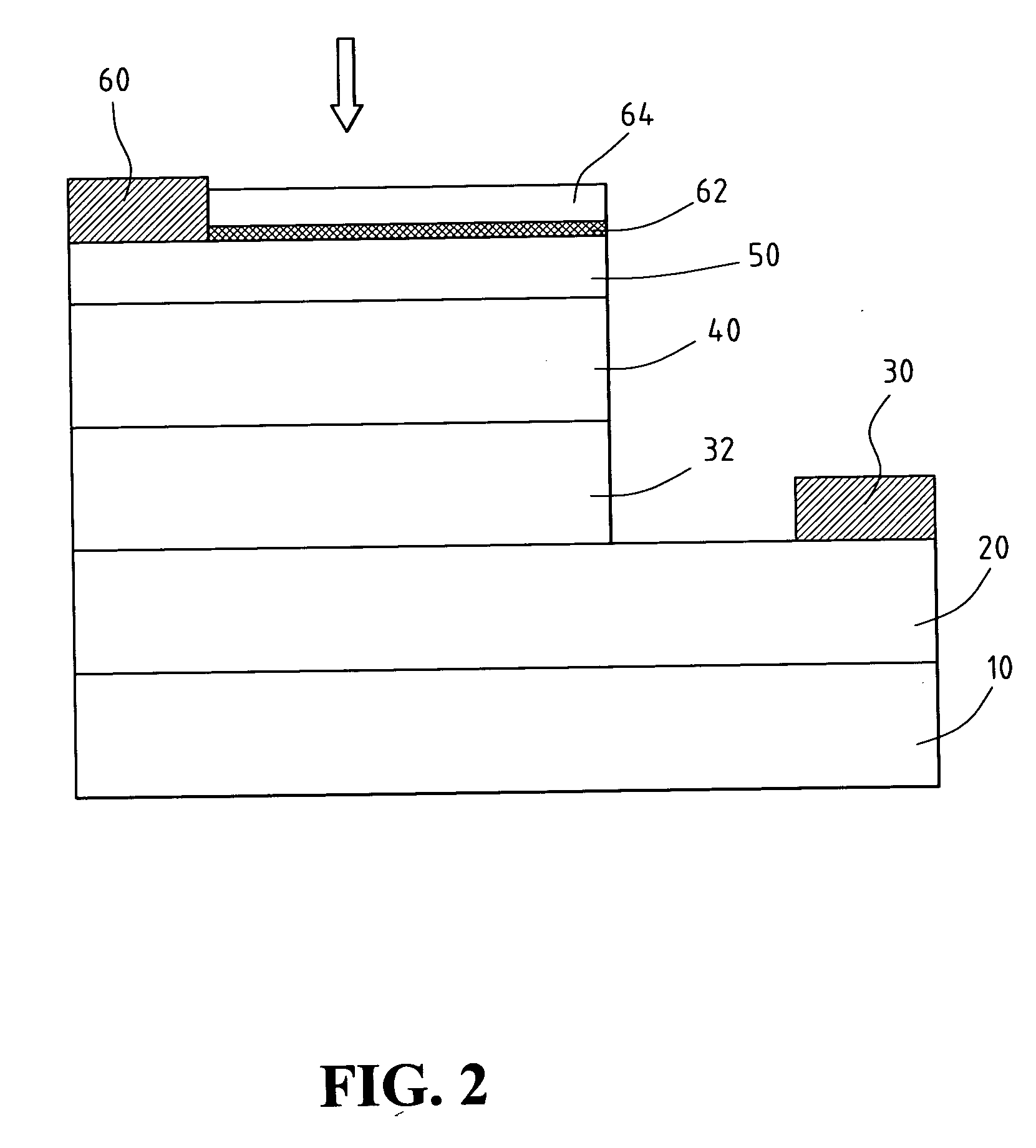Gallium-nitride based ultraviolet photo detector
a technology of gallium nitride and ultraviolet light, applied in the field of photo detectors, can solve the problems of high operation voltage, high production cost, and fragility of vacuum tubes
- Summary
- Abstract
- Description
- Claims
- Application Information
AI Technical Summary
Benefits of technology
Problems solved by technology
Method used
Image
Examples
first embodiment
[0018]FIG. 2 is a schematic diagram showing the epitaxial structure of the GaN-based UV photo detector according to the present invention. As shown in FIG. 2, the GaN-based UV photo detector has a substrate 10 made of C-plane, R-plane, or A-plane aluminum-oxide monocrystalline (sapphire), or an oxide monocrystalline having a lattice constant compatible with that of nitride semiconductors. The substrate 10 can also be made of SiC (6H—SiC or 4H—SiC), Si, ZnO, GaAs, or MgAl2O4. Generally, the most common material used for the substrate 10 is sapphire or SiC. An n-type contact layer 20 made of n-type doped AlaGabIn1-a-bN (0≦a,b≦1, a+b≦1) having a specific composition is then formed on an upper side of the substrate 10. The n-type contact layer 20 has a thickness between 3000 Å and 40000 Å and a growing temperature between 700° C. and 1200° C. Then, a light absorption layer 32 made of undoped AlcGadIn1-c-dN (0≦c,d≦1, c+d≦1) having a specific composition is grown on the n-type contact lay...
third embodiment
[0024]FIG. 4 is a schematic diagram showing the epitaxial structure of the GaN-based UV photo detector according to the present invention. As shown in FIG. 4, the present embodiment has an identical structure as in the previous embodiments. The only difference lies in the material used and the structure of the light absorption layer. Within the present embodiment, the light absorption layer 36 has a superlattice structure comprising multiple (≧2) intermediate layers. Each intermediate layer comprises two base layers made of undoped AlpGaqIn1-p-qN and AlrGasIn1-r-sN (0≦p,q,r,s≦1, p+q≦1, r+s≦1) respectively. Each of the base layers has a specific composition, a thickness between 50 Å and 200 Å, and a growing temperature between 700° C. and 1200° C., all independent of other base layers. The light absorption layer 36 has a total thickness between 100 Å and 10000 Å. The superlattice structure of the present embodiment avoids the cracking problem of a single-layered thick film having a h...
PUM
 Login to View More
Login to View More Abstract
Description
Claims
Application Information
 Login to View More
Login to View More - R&D
- Intellectual Property
- Life Sciences
- Materials
- Tech Scout
- Unparalleled Data Quality
- Higher Quality Content
- 60% Fewer Hallucinations
Browse by: Latest US Patents, China's latest patents, Technical Efficacy Thesaurus, Application Domain, Technology Topic, Popular Technical Reports.
© 2025 PatSnap. All rights reserved.Legal|Privacy policy|Modern Slavery Act Transparency Statement|Sitemap|About US| Contact US: help@patsnap.com



